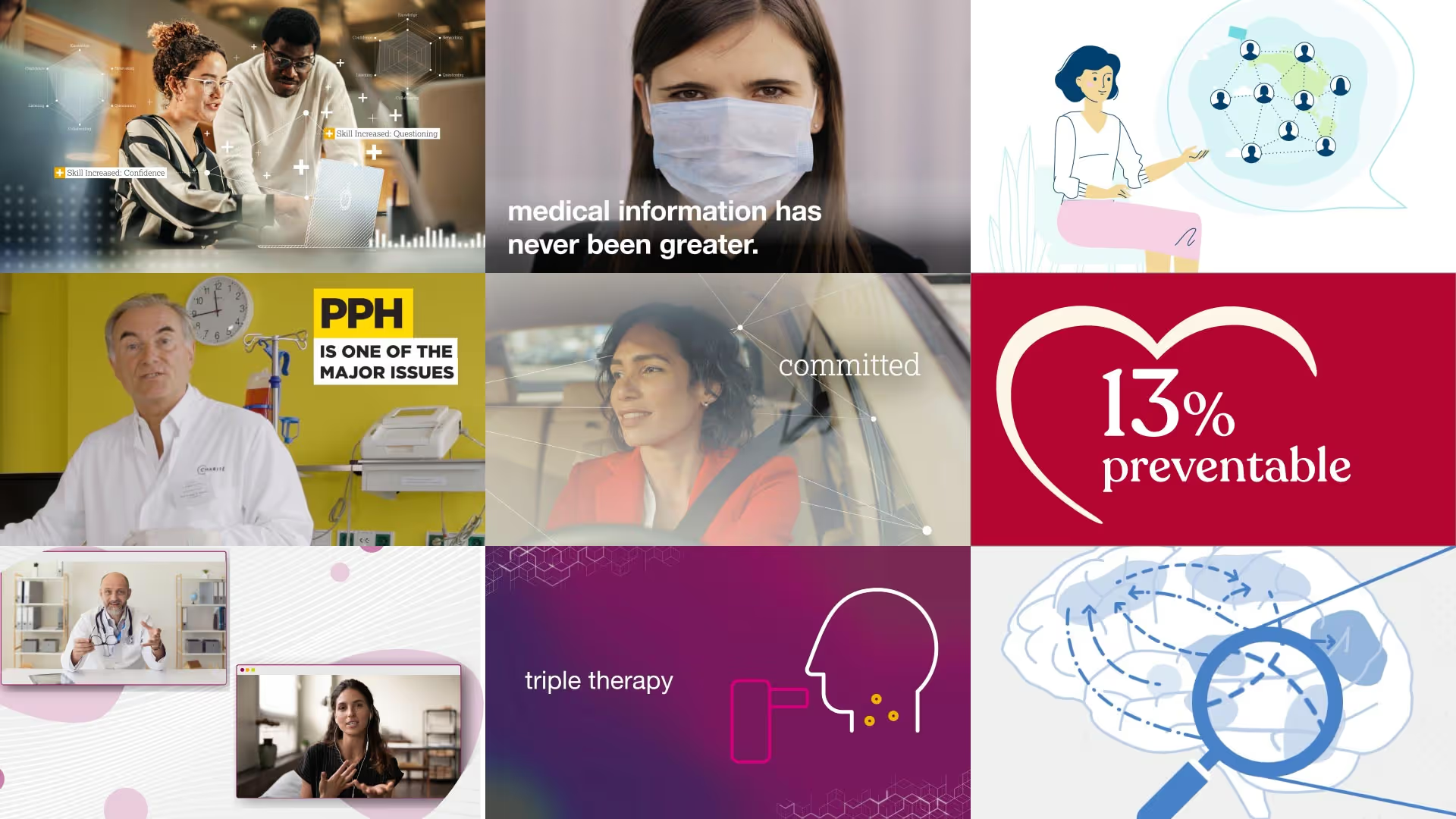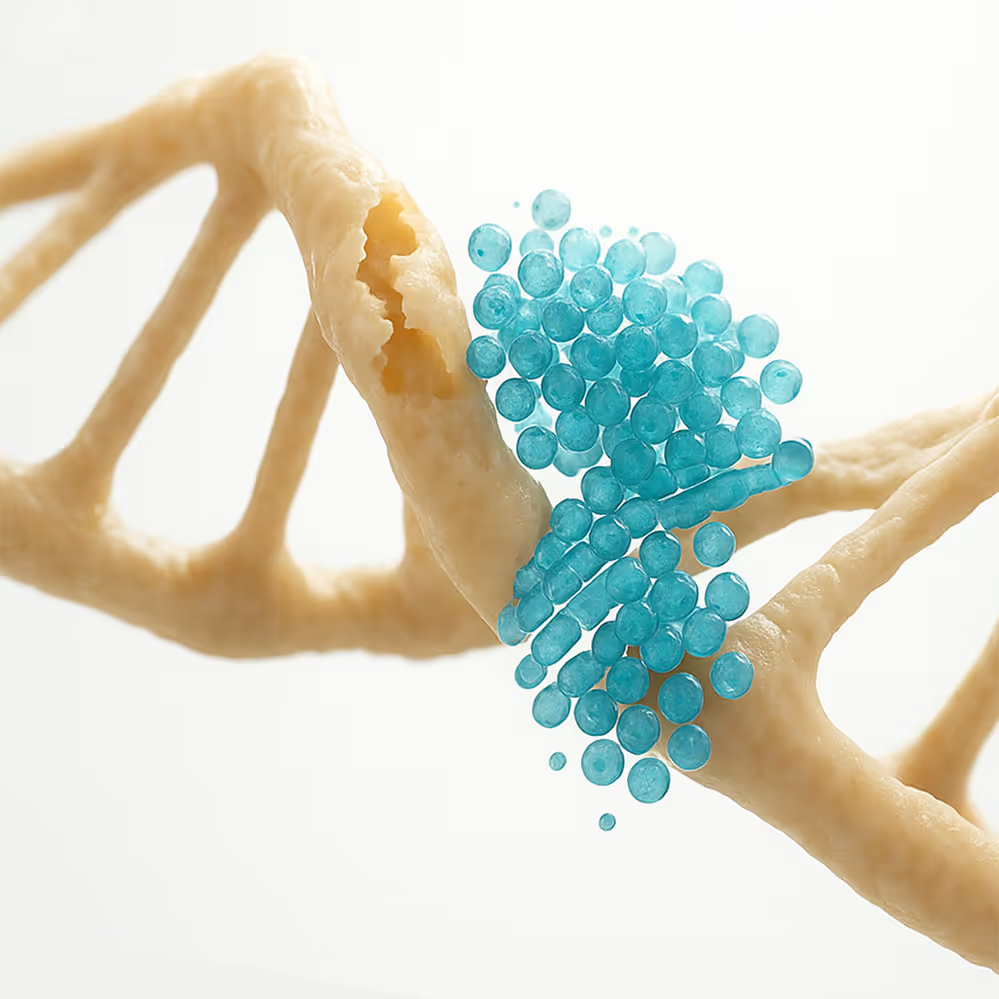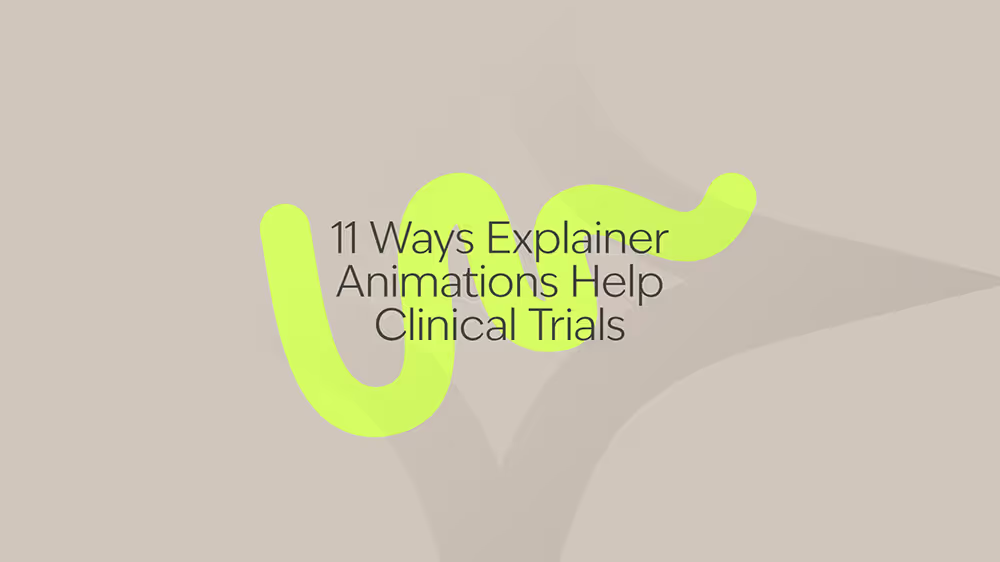Pharmaceutical Animation
Having the right information at the right time is absolutely essential for delivering best-in-class care. The patients and HCPs of today - like most of the population - have serious expectations on how information should be delivered. You need to Tell It Better by making your complex pharma animations simple.

Trusted by leading brands to tell their stories
















We’re a UK animation agency with a long history of producing animated pharmaceutical videos.
We help pharma companies Tell It Better by simplifying complex information, showcasing the hard to film and using storytelling to educate and inform patients and HCPs. With over a decade of experience in pharma video production, we bring our knowledge, insights and experience to every project to get the very best from your brief.

5+ Years
Established in 2019, animating together since 2014.
6 Specialists
A team of highly experienced and talented specialists.
500+ Projects
Successfully delivered projects; on time and on budget.
Pharma animation services overview
Whether your audience is patients, healthcare providers (HCPs) or employees, you can use animated videos to explain, inform and educate. By using 2D animation, 3D animation and motion graphics, you can turn complex medical information into clear, simple visual stories. Whether you’re looking to explain how drugs work, show clinical trial processes, teach patients about conditions or side effects, medical animated videos can help you Tell It Better.

Mechanism of Action Animations
Animation is the perfect medium for an MOA video as it can show how drugs work inside of the body. It’s easy to visualise how cells and molecules interact, and make complex science easy to understand. MOA animations are brilliant for helping doctors and HCPs explain treatment pathways and drugs to patients, as well as for use at conferences or medical meetings.

Animated Clinical Trial Process Videos
Explaining how a trial works and what the participants can expect from their involvement can help to recruit and retain your trial participants. By showing trial timelines, trial processes and explaining complex protocols, you’re making the steps easier to follow; helping your patients and HCPs.

Medical Device Animation
Medical devices are only as good as the people who use them. By showing exactly how to use a medical device correctly you’re reducing the likelihood of user error. Whether training HCPs or patients, animated videos can show step-by-step instructions, explain the why behind the device, and other crucial information to get the very best results.

Patient Education Animation
Helping patients to understand what to expect can be vitally important to their recovery and treatment plans. By using animated videos, you can tell the story of living with a condition, show how diseases progress over time and explain treatment options clearly. This is perfect for patient support programs and making complex medical concepts more relatable.
Pharmaceutical animation highlights
We work with names you may recognise, and names you might not. Famous or not, here’s some of our favourite bits recently.



Why pick us as your medical animation video studio?
We’ve spent the last decade helping some of the largest pharma companies in the world Tell It Better to their patients, HCPs and employees. Over this time, we’ve developed our box of Tricks - a toolkit of experience, insights and knowledge that gets the best from your brief.
Pharma Experience
We’ve been working on medical animations for pharma companies for years now. We’ve produced videos ranging from MOA animations, clinical trial videos, medical device videos, medical animation videos, patient stories, internal communications videos and much more. When it comes to pharma animations, we get it.
ISO Certified
Since 2023 we’ve been ISO 9001 certified. We have a rock solid process for designing and delivering brilliant pharma video production for our clients. Whether you’ve got an important town hall meeting, a new product launch, a crucial trade show, we’re trusted - and proven - to deliver brilliantly, on time, every time.
Creatives At Heart
We’re at our best when we’re being creative. We work with some of the biggest brands in the pharma industry and we love finding new ways to push and innovate whilst being on brand. We keep our eyes peeled and ears to the ground for new developments in our industry, so we can bring them to the new developments in your industry.
5 Star Service
Every project has its unique challenges to overcome - from complex briefs to tight deadlines. What’s not unique is our glowing review at the end. We pride ourselves on delivering brilliant work alongside a brilliant service. That’s why we’re recognised for our excellent project management, communication and our ability to meet deadlines.
Featured sectors
Pharmaceutical Animation can be a broad catch-all. Check out some of our more specific services.
The process: How we work
What sets us apart is our ability to work to tight deadlines, deliver high quality work and remain efficient to stay on budget. In 2023, we achieved ISO 9001 certification, proving our process is rock solid and dependable. What does that mean in practice? Brilliant delivery, every time, on time.
1. Brief & Strategy
With medical animation video, you can create literally anything. So, how do you make sure you create the right thing? A thorough understanding of the brief, an objective strategy and a clear knowledge of the who, what, why, where, when and how of your project. We create a detailed briefing document that holds the all important information ready for the team.
2. Production
Our pharma video production process is designed to move through small steps that each build on the last. This means we work in a highly efficient and collaborative way, designed to work for everyone, no matter your level of creative experience. Whether you’ve been involved in animation before or not, we’ll take you on a journey with us.
3. Review & Revisions
We believe that the best projects are collaborative. We’ll have regular check-ins and creative presentations to share our work, gather feedback from you and wider stakeholders and discuss changes and amendments. Our process keeps you involved and across the project, without adding to your workload.
4. Final Delivery
Final delivery is always slightly different depending on your unique requirements. You may need multi-language subtitling for a global audience, script changes for different audiences, or various sizes and lengths for different channels. No matter the final list of deliverables, we’ll add the finishing touches ready for you to launch to the world.
How much does a pharmaceutical animation video cost?
It depends on what the pharmaceutical animation needs to do, where it needs to live and how complex the specific requirements that you have are. There’s three main factors that we assess when putting together a proposal - how complex it is, how quickly you need it, and what design style it needs to be in. A video needed in multiple languages is going to cost more than a single language. A very short production window will mean a bigger team is needed to get the video completed faster. A highly complex style using lots of custom illustrations will be more expensive than simple 2D animated explainer video.
We will always provide a free, no-obligation proposal with at least 2, often 3 different budgets. This way you can see exactly what you’re going to get, and what the cost associated would be. Drop us a message, or give us a call so we can get a bit more information about what you’re trying to achieve, and likely give a ballpark estimate pretty quickly.
How long does it take to create a Mechanism of Action animation?
The simple answer is that there isn’t a set time it takes to create an MOA animation, or any animation. It all depends on the complexity of what you’re looking to achieve. If you need multiple languages, multiple aspect ratios and durations for different marketing channels, then that’s going to take longer (or a bigger team) than a single video. If your video needs to pass through legal, compliance or regulatory checks, then that will add time to the process. If you have a number of internal stakeholders that need to approve and sign-off design work, that will influence the timeline. A simple, illustrative MOA animation will take less time than a photorealistic, highly complex 3D MOA animation.
We typically advise an 8 week turnaround from brief to delivery. This gives you enough time between tasks to get approvals without rushing through. However, we often work on shorter timelines when there is an urgent deadline that needs to be met. In some cases, we’ve produced simple projects for regular clients within a week. If you have a deadline that you absolutely need to meet, drop us an email or give us a call and we’ll be able to tell you if we can meet it.
What types of medical animation video work best for clinical trial recruitment?
For clinical trial recruitment you could use a step-by-step process animation that shows potential patients exactly what will happen, and when it will happen. This could be integrated with a timeline animation to show the different stages of the trial and any important milestones. Then you could use a patient journey animation to show daily life before, during and after the trial including information like hospital visits, medications and integrating the trial into their daily lives. You could also use medical animation video to explain side-effects and safety information to highlight any potential risks and show how patients are monitored throughout the trial for safety reasons.
The style of the animations would depend on your specific aims and objectives. You could use animated characters, incorporate live-action footage, use a motion graphic approach, or photorealistic 3D. We would help to advise based on brand guidelines, budgets, production timings and your objectives.
Can you create pharma animations in multiple languages?
We have lots of experience creating pharma animations for a global audience. There are a few different ways to tackle this issue in an efficient but effective way. To start with the most simple execution, you can use translated subtitles on an existing ‘primary’ video. For example, create the first video in English with a voiceover and any on-screen text. Then have your different languages subtitled below. The medium execution would be to only have text on screen and not have a voiceover. We can then use translated scripts to change the text on screen to the desired language. Finally, for the most immersive route, you would have your translated script voiced in the different languages and create an animation with each language having its own voiceover, text on screen and subtitles.
How do you ensure medical accuracy in pharmaceutical animations?
We work closely with your team to ensure that everything from the script, through to the style, through to the storyboard is all accurate and compliant. Every step in our process would be presented to you for feedback, any amendments and ultimately sign-off before moving through to the next stage. This means we can create highly tailored and bespoke visuals to your subject matter. At the storyboard stage you will have every frame of the animation drawn in a sketch style before being ‘rendered’ in a high quality version. This is especially useful to legal or compliance teams who can sign off the accuracy and compliance of the animation before anything is actually animated.
What is the process for creating a medical device animation?
We approach every and any project we produce in the same way. Our process has been developed over a decade, and we follow it consistently to ensure that we can guarantee to deliver projects on time and on budget. The process starts with pre-production tasks like information gathering, workshops, script writing and designing mood boards. Then we move into production tasks like style setting (or style frames) and two levels of storyboard development - the sketch storyboard and the final storyboard. Once everything is approved, we continue into post-production where we work on animation, sound design, voiceover recordings and creating any additional videos as part of the scope of work. Finally, we add the finishing touches like sound effects and subtitles. Our process has over 100 steps - but don’t worry, we do most of them! In 2023, we had our process ISO 9001 certified, so we hold ourselves to the highest standards.
Are pharmaceutical animation videos compliant with industry regulations?
We have a wealth of experience working on projects that need to be approved from compliance and regulatory perspectives. Our process has built in review and approval stages to make sure that we don’t progress without your express approval. Often, animation is the perfect medium for these types of projects as the legal, compliance and/or regulatory team can see exactly what is going to be produced in the form of a storyboard. This gives the opportunity to check content, references and claims before the actual animation work is done.
How can pharma video production help explain drug side effects to patients?
Animation helps to turn complex information into simpler, easier to understand information. Rather than just telling patients, you’re showing them through an on-demand, engaging video. By using clear visual storytelling, you can break down what’s happening to the body and make medical symptoms easier to recognise. Step-by-step animations can show how side effects might appear, when they occur (or are likely to occur) and what those effects might feel like. Patients, like most people, need to actually understand something to be able to recognise it happening.
What makes a good Mechanism of Action animation?
The sign of any good video, whether an MOA animation or not, is a strong narrative that guides viewers through each step - helping to build understanding as the animation progresses. For MOA videos in particular, it’s key to show accurate, scientific information but in a simple, visual way. This helps to make the video understandable, especially to patients, without losing technical accuracy. A good example of this would be the visualisation of the drug’s journey through the body. The science and information will be highly technical and advanced, but the visuals can be simplified. Those visuals can transition between macro and micro, showing the drug entering the body through to reaching its target.
How do you measure the effectiveness of pharmaceutical training videos?
For pharmaceutical training videos, often the effectiveness is completion rates (how many people watched until the end), and the retention rate of the information. You can measure this through interactive quizzes or surveys to people who received the training. There can also be broader quizzes and surveys to capture feedback on the perceived effectiveness of the training from patients, HCPs or internal stakeholders. Finally, there are more abstract or intangible KPIs you could monitor. Does training time reduce through the use of animated videos, were there fewer reported user errors or better patient compliance? These questions will need some reporting framework set up to capture them, as well as more time to see the changes unfold over time.
Every project has its own unique measures of success. We’ll work with you as part of our briefing stage to understand what the success of yours looks like.
Can medical animations be used for both HCP and patient education?
Depending on the context of the project and your aims, you may be able to use the same animation for both target audiences. However, you may consider using the same core visuals and style with a slightly different script. This way your patient education animation gives the patients more approachable and less technical information compared to the HCPs. As long as the scripts were roughly similar in word count and section/scene lengths, then it would only require a slightly larger budget to account for some extra voiceover work. Repurposing assets for different uses and audiences is a brilliant way to make your animations last longer and be more useful to the intended audience.
What file formats do you deliver pharmaceutical animations in?
We can deliver in a wide range of formats from our software packages. Typically, we supply high quality MP4 files for use in sales presentations, conferences and large format viewing. We also supply alongside it a web-optimised version which has suitable compression and colours for websites, social media and any other digital platforms you may want to use. We can deliver in multiple sizes, formats and lengths depending on the context of use and the device. If you have something specific in mind, don’t hesitate to reach out and ask.
How do you handle confidential pharmaceutical information during production?
Confidentiality is key to our clients, which is why we can’t show most of the work we produce in pharmaceuticals. We’re happy to sign NDAs to keep sensitive information behind closed doors, and hold all your production team under similar confidentiality clauses. Our team has worked together for years, so we only work with people that we trust. We use technology and software with strong data protection, and project based privileges, so only your team can access your project. Any distribution and communication happens via secure and private channels (like Teams) to comply with IT best practices. We use password protection to secure the sharing of any information or data. Then, once a project is completed, we remove it from the cloud and keep a back-up offline in case of future amends. We can also put in place clear protocols for destroying any confidential information once your project is completed. Finally, the best policy is to only share information that is completely necessary for our scope of work, and re-visit supplied materials after writing the script so we have the very minimum amount of sensitive information needed to fulfil the brief.
What's the difference between 2D and 3D animation for medical videos?
2D animation for medical videos is often best for a simplified, stylised explanation. You would use illustration, imagery or graphic design to explain your message. 2D works brilliantly for patient education animation, or detailed information like diagrams, processes, timelines. It keeps complexity easy to approach and understand. It’s generally quicker to produce and more cost effective than its 3D counterpart.
3D animation for medical videos is better for a greater sense of realism. You can show anatomy, actual medical devices and simulate molecular interactions (particles, forces, gravity, fluids, etc). It gives that further level of depth, and more technical explanations. It’s not unapproachable for a patient viewer, but due to its longer production times and higher associated costs, it's usually deployed on technical explanations for an advanced market. 3D works brilliantly for medical device animation, procedures, demonstrations and detailed mechanism of action animation.
How can animation improve clinical trial participant retention?
When people know the reason why, or they are bought into the bigger picture, generally they will feel part of something. By properly explaining the trial, the results, the outcomes for people, participants will feel more motivated to stay on the trial and see it through. At each milestone or stage you can give clear visual explanations of what to expect - which can help to reduce worries and help the participants to feel more confident and prepared. You can also use animated videos to boost morale on longer trials, showing them their progress and the contribution it's making to the wider effort.
Do you provide scientific script writing for pharmaceutical videos?
We have partners with extensive backgrounds in the pharmaceutical and medical industries, often to a PhD level. They can help transform highly complex, technical information into simple language that’s easier to digest. Our team has a long background in creating animated pharmaceutical videos, especially in visual storytelling for pharma videos. Most of our clients have the scientific experts with technical materials already developed, but need help to translate it for a patient audience. We’lll work collaboratively with your scientific experts through various creative tasks to ensure everything we create is completely accurate, whilst having visual storytelling and animation in mind.
Can pharma animations be updated as drug data changes?
The brilliance of using animation is that updates are quick, simple and cost-effective to make - no expensive re-shoots required. If you know at the briefing stage that changes are likely to be made in the future, we can build a modular design that is easy to update in specific sections. We can also work in a future-proofed way, using software that sources the information for us from files like Word documents, meaning text changes are nearly instant. We use this system to translate text-heavy animations into multiple languages, pulling in different language versions from different Word documents. But the same system can be applied to technical information like dosages, drug names, new indications, disclaimers or safety information.
How do you make complex medical information engaging through animation?
No matter your subject matter, all complex information needs to be explained simply. To do this, you need to break down the complex information into clear, bite-sized chunks. Balance out sections of detail and technical information with sections of simplicity. We all appreciate contrast. Whether that’s the blacks and whites of an image, or the story you tell in the video. Think about information in terms of contrast - how can you balance technical detail with simplicity. You can also make a complex medical device animation more engaging by changing up the animation style - cycling through sections of 2D, 3D, motion graphics. Or you can change the creative visuals that you’re showing. Starting outside the body, then going into the molecular changes, then showing a simulation, then using an abstract visual device, then going back to detail, and repeat. With any video, you need to consider making it understandable, making it memorable, and having plenty of contrast.
What is the review process for pharmaceutical animation projects?
Our process has two core philosophies; small steps that build on the step before, and plenty of check-ins to ensure we’re on the right track before going too far. Because of this, we have roughly 6 distinct stages to each project. At each stage we’ll present what we’ve done, wait for your feedback and then incorporate feedback before moving to the next stage. We share the majority of our work in the form of collaborative documents that you can leave comments on. This makes it easy to capture feedback quickly, but also gives a single source of feedback to make amendments straightforward. By working in this way, we can keep compliance, legal and any other stakeholders to your project informed, up to date and across the project as a whole. By working together it means no surprises at the end of the project, and no re-works or updates that might implicate the timeline or the budget.
How long should a pharmaceutical animation video be?
There is no one rule for the length of a pharmaceutical animation. There are two main indicators of length; who’s going to watch it, and where? You may be speaking to a patient audience, but one video might be for social media, whereas the other video might be educating on a drug they’ve been prescribed by their HCP. If your audience is not necessarily invested in you, or your message, then keep it short. Typically under 30 seconds for social media, and under 60 seconds for conferences or exhibitions. If you’re speaking to a patient audience, try to keep it simple and clear, with a length of 1-2 minutes. If you’re delivering detailed information like a MOA animation, or a scientific video, then under 2 minutes. If you’re making pharmaceutical training videos on complex procedures or highly detailed information then you can run much longer, anywhere from 3 minutes upwards. We’ve worked on pharmaceutical animations that are 30 seconds, and pharmaceutical animations that are 10 minutes. The difference between them is the audience.
Still have questions?
Don't hesitate to get in touch!
















